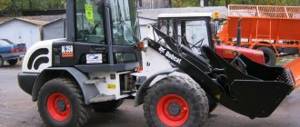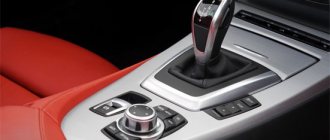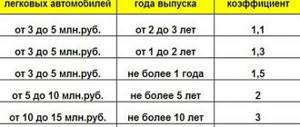Car classification
Vehicles, depending on their purpose, can be divided into certain types:
- cars;
- buses;
- motorcycles;
- trailers;
- semi-trailers.
The main types of cars are cars and trucks. And the first of these include vehicles with no more than 9 seats, including the driver’s seat. They are designed to transport people and their luggage.
Cars in which goods are transported or special equipment is installed are called trucks.
In more detail, each of the groups of cars is divided by purpose, by overall dimensions, by design features (layout), body type, as well as by engine type and size.
European classification
The Economic Commission for Europe classification and the Euro NCAP classification are quite complex for the average person to understand. The existing European classification is a simplified version of the above two. The division of cars into classes is based on indicators such as overall dimensions and body type. In the table below we present basic information for all classes:
| Designation | Class | Dimensions | Type of classification | |
| Length, m | Width, m | |||
| A | Extra small | Up to 3.6 | Up to 1.6 | By overall dimensions |
| B | Small | 3,6 – 3,9 | 1,5 – 1,7 | |
| C | Small medium | 3,9 – 4,4 | 1,6 – 1,75 | |
| D | Average | 4,4 – 4,7 | 1,7 – 1,8 | |
| E | Higher Secondary | More than 4.6 | More than 1.7 | |
| F | Higher | More than 4.6 | More than 1.7 | |
| S | Sports cars | — | By body type | |
| M | Minivans | |||
| J | Crossovers, SUVs | |||
| — | Pickups | |||
"A" class.
This includes small cars, most often 3-door, less often 5-door hatchbacks. These cars are compact, maneuverable (which is especially important in big cities), and economical.
Their main drawback is their small capacity (no more than 4 people, while the trunk is also small), so they are not suitable for a large family. You can't expect any special speed or power from them. The most famous representatives of this class are Renault Twingo, Daewoo Tico, Citroen C2, Ford Ka, VW Lupo, Hyundai Atos, VAZ Oka, Daewoo Matiz
Prices range from 4,000 to 8,000 dollars.
"B" class.
Slightly larger in size than a class A car. These are 3- or 5-door hatchbacks or small sedans. The level of comfort here is slightly higher than in the previous group, but the equipment is still far from premium. The vast majority are front-wheel drive two-axle vehicles. Examples - Ford Fusion, Volkswagen Polo, Hyundai Getz, Peugeot 206, Fiat Punto, SEAT Cordoba, Tavria.
Prices vary - from 4 to 25 thousand US dollars.
"C" class.
Another name is “Golf Class” - after the brightest representative of the group - the popular Volkswagen Golf. Europeans have been giving preference to cars of this class for many years now. Why? It's simple: they are economical, the dimensions of the car allow them to carry 5 people in the cabin (including the driver), they are powerful and durable enough for short trips and daily city trips. Among the “C” class cars there are hatchbacks, sedans and station wagons. Prominent representatives: Audi A3, Ford Escort, Ford Focus, Opel Astra, Subaru Impreza, Suzuki Baleno, Toyota Corolla.
Prices on average are 10-25 thousand dollars.
"D" class.
Beautiful design, interior comfort, spacious interior, roomy trunk - all these are the characteristics of a car of this class. This group includes sedans, hatchbacks, and station wagons. Within the class, all cars are divided into family (Citroen C5, Opel Vectra, Nissan Primera) and luxury (Audi A4, BMW Series 3, Jaguar X-type, Opel Insignia, Volvo S60, Mercedes W-205).
Prices for cars in this class depend on the type (family or luxury car) and range from $9,000-25,000.
"E" class.
These cars are known to us as business class cars. A spacious interior, a spacious luggage compartment, a high level of comfort (even in the basic configuration), independent suspension - all this allows you to make long trips and at the same time enjoy the convenience and safety of the car. Representatives of the “E” class – Mercedes E-Class, Audi A6, BMW Series 5, Toyota Camry, SAAB 9-5, Volvo S80/V70.
The average price is from 20 to 90 thousand dollars.
"F" class.
These are luxury cars. The level of comfort in the cabin exceeds all expectations, the most expensive and high-quality finishing materials are chosen, driving dynamics, power, speed - everything is at its best. Examples of cars in this class are Jaguar XJ8, Mercedes-Benz S500/S600B, MW 7-Series, Audi A8, Rolls-Royce Phantom. Most often, people who can afford to purchase such a car use the services of a personal driver - prices for an “F” class car start at $60,000.
"S" class.
Convertibles, roadsters. These units are not intended for family trips out of town with a lot of suitcases. Most often they have 2 seats, less often - 4. Rigid suspension and low seating, high speeds, power - all this positions these cars as sports cars. The main distinguishing feature is the convertible top. The brightest representatives are Mercedes-Benz SLK, Audi TT Coupe, Porsche 911.
The prices for such cars are cosmic – starting at $150,000.
"M" class.
These are minivans - up to 9 seats (including the driver), a spacious interior and luggage compartment, the hood is not very pronounced. Perfect for large families, as well as for people who love to travel. The front doors are hinged, the rear doors can be either hinged or sliding. The most popular minivans are Ford Windstar, Hyundai H-1, Volkswagen Sharan, Mitsubishi Space Gear, Opel Zafira, Volkswagen Caravelle/Multivan.
Prices range from 5,000 to 15,000 US dollars.
"J" class.
This includes SUVs, crossovers, and SUVs. Durable suspension, high ground clearance, excellent cross-country ability - all this makes J-class cars very popular among Russian consumers. The salon accommodates from 4 to 9 people. There are options with both 3 and 5 doors. Examples - Infiniti FX, Mercedes Gelandewagen, Lexus RX300, Hummer H1, Nissan Murano.
Prices on average range from 8,000 to 25,000 dollars.
Pickups.
These cars have a special design - the passenger compartment is structurally separated from the luggage compartment. In this case, the trunk itself can be either open or closed. Such vehicles are used for transporting small-sized cargo. Examples - Fiat Strada, Nissan Navara, Ford Ranger, Dodge Ram, Mitsubishi L200, Nissan Titan, Volkswagen Amarok.
Average prices – from 15,000 thousand dollars.
Important
As you can see, the European classification is as detailed as possible; it takes into account not only the dimensions of the car, but also the body type. Therefore, when choosing a car, it is better to base it on this grouping. At the same time, there are other, no less important classifications that also need to be taken into account.
Classification of trucks by purpose
According to their purpose, trucks are divided into three main groups:
- General transport. These vehicles are designed to move cargo on public roads where there are restrictions on axle load.
- Special vehicles. They have special equipment installed on a cargo chassis: truck cranes, concrete mixers, fire tanks, aerial platforms.
- Specialized. These trucks are designed to transport certain types of cargo. Examples of them are container ships, dump trucks, and tanks.
Tipper trucks are the most common type of specialized cargo equipment. Bulk and bulk cargo are unloaded by tipping the platform with sides. These machines are divided into groups according to size and axle load.
Road dump trucks are utility, agricultural and construction trucks. Their carrying capacity can be from 1.5 to 45 tons.
Off-road trucks are mining dump trucks. Their task is to remove rock and building materials from quarries in which mineral resources are mined in open pits. These are the largest trucks. They can transport up to 400 tons of rock, but cannot travel on roads due to weight and size restrictions. They are delivered to the work site disassembled.
Classification of trucks by load capacity and layout
Trucks can be classified according to several criteria. The main feature by which these vehicles are divided into groups is their carrying capacity. The number of axles is directly related to it, because the load of one axle on the road is regulated by law and should not exceed a certain value. Consequently, the greater the mass of the cargo being transported, the more axles the truck should have.
The vehicle's carrying capacity is determined as follows:
- especially small if it can transport less than a ton of cargo;
- small – 1-2 t;
- average – 2-5 tons;
- large – 5 tons;
- especially big.
The last group includes mining dump trucks, the carrying capacity of which is significantly higher than the limits established by weight restrictions on the roads.
Now, in connection with the development of international safety requirements by special commissions at the UN, there is a generally accepted classification of trucks. According to European standards, car classes, according to gross weight, look like this:
- N1 – up to 3.5 tons;
- N2 - from 3.5 to 12 tons;
- N3 – from 12 t.
In the USA, trucks are divided in more detail into eight classes based on gross weight.
By number of axes
The number of axles is one of the main indicators of a vehicle’s carrying capacity. Within this classification, the following categories of cars are distinguished:
- 2-axle (these are cars, minibuses, some types of special equipment - tractors, ATVs, small cranes, towing vehicles, etc.)
- 3-axle (heavy-duty tractors)
- 4-axle (load hitches - dump trucks with trailers, trucks)
- Multi-axis (6 or more axes). This is heavy military equipment.
Important
It is noteworthy that on one axle there can be not 2, but 4 wheels. This is true for multi-axle heavy-duty vehicles and some minibuses. The carrying capacity of a car directly depends on the number of axles - the more there are, the more weight the car can carry.
Classification of trucks by body type
There is a very detailed classification of trucks by body type. The car body can be open, like a dump truck, or closed, like a container.
The first, both in terms of time of use and prevalence, is onboard. This is what they say when the space of the cargo platform is limited on four sides by sides that can be folded down if necessary.
If a fabric awning is stretched over the body on special removable ribs to protect the cargo from bad weather and prying eyes, then this is a tilt body.
An all-metal van with lockable doors can be installed instead. On its basis, isothermal bodies with thermal insulation protection are manufactured, allowing to protect cargo from sudden temperature changes.
An isothermal body with an air conditioning unit inside is already a refrigerator designed for transporting perishable goods over long distances. In turn, refrigerators are divided into 6 classes, depending on the temperature range.
A separate type of body is tanks. They can be steel or aluminum, vary in shape, size and number of sections inside, and have pumps and other additional equipment.
The loading platform is specially equipped for car carriers transporting several cars, as well as for container ships and timber carriers.
Tractors as a separate type of freight transport
Truck tractors are also trucks designed for transporting semi-trailers and trailers. Instead of a body, they are equipped with a special saddle for quickly changing the trailer set. In Australia, with its vast expanses, there are couplings of five trailers with a total weight of more than 100 tons.
Car types vary in layout. Thus, American truck tractors are made according to the classic layout - hood. Europeans place the engine under the cab, increasing the useful length of the road train.
To tow particularly heavy loads, ballast tractors are used. They have a short body filled with ballast to increase traction weight.
Delivery trucks
Class N1, mentioned earlier, includes the so-called delivery trucks. Their carrying capacity is less than 2 tons. The layout is wagon or semi-bonnet. Car types vary in body shape.
Delivery trucks are equipped with an all-metal van with hinged rear doors and sliding front doors. By the way, pickup trucks, which are located on the border between trucks and cars, are a subtype of delivery trucks.
These are either modifications of passenger cars with a cargo platform instead of a trunk and rear seats, which are found on European roads, or special frame-type models with a cabin that can accommodate 2-3 or 5-6 people.
Russian delivery trucks are the Gazelle and Sobol families of the Gorky Automobile Plant. They produce pickups and vans from IzhAvto, UAZ and VAZinterService.
Classification of passenger cars by engine and drive type
Types of trucks are usually not separated by engine and fuel - there are many other criteria. But passenger cars can be divided into groups according to engine type:
- gasoline;
- diesel
Diesel engines are more technologically advanced, environmentally friendly and economical to operate, but are more expensive than gasoline ones. They are reliable, but demanding on fuel quality, especially in cold weather. Cars with gasoline engines accelerate faster and reach higher speeds.
The main classes of cars according to the domestic classification are determined depending on the engine volume in cubic centimeters or liters as extra small, small, medium and large. The latter is divided into business class and luxury class cars. The domestic automobile industry produced only government-issued Chaikas and ZiLs in the large class with an engine capacity of more than 3.5 liters.
Mini-cars with an engine capacity of just over one liter (Oka VAZ-1111) belong to a particularly small class.
Small class - cars with an engine from 1.1 to 1.8 liters - these are all other domestic passenger cars, with the exception of the Volga, which belonged and still belongs to the middle class (1.8-3.5 liters).
Vehicle types can also be determined by the type of drive:
- rear-wheel drive, with driving rear wheels;
- front-wheel drive, with a driven front pair of wheels;
- all-wheel drive.
The first Russian front-wheel drive passenger car was the VAZ-2108, and the all-wheel drive, without the ability to disable this function, was the Niva.
According to wheel formulas
The wheel formula tells you the number of wheels in the car (first digit), and also shows how many of them are driving (second digit). This classification distinguishes the following groups:
- 4x2 – four wheels, two driven (front or rear wheel drive).
- 4x4 – four wheels, four driven (all-wheel drive).
- 6x4 – six wheels, four driven.
- li6x6 – six wheels, six drive (all-wheel drive).
- multi-wheeled special vehicles (buses, trucks, cranes, large military wheeled vehicles).
Important
Representatives of the passenger car industry often offer the same car models with different wheel configurations: this way the buyer can choose the most suitable option for himself - after all, some people prefer all-wheel drive (4x4), while others feel more comfortable driving a front-wheel drive or rear wheel drive car.
Classification of passenger cars by body type
Body type is the most common criterion by which passenger cars are distinguished. It is classified by the combination of three volumes (passenger compartment, luggage compartment and engine) and by design features.
Depending on the presence of a roof, passenger cars are divided into closed (sedan, coupe, hardtop, fastback, hatchback, station wagon, limousine), open, with an opening or removable roof (convertible, chaise, brogue), as well as cars with a partially folding or removable top (landau, targa and pickup).
The most common:
- a sedan with a three-volume body, two or three rows of seats, there can be two, four or six side doors;
- a coupe with two or three volumes, two doors and two rows of seats (the rear one can be cramped);
- hatchback with a two-volume body and a large rear door. Due to the rear seats, the luggage compartment here can be significantly increased;
- station wagon, with a body not divided by a stationary partition into passenger and luggage compartments, and a door at the rear. A variation is the minivan with a higher suspension;
- a limousine, the body of which has a partition behind the front seats;
- a convertible in which the roof is folded and the side windows are lowered (in the phaeton the windows are removed).
By affiliation
Naturally, all the cars that drive on city streets are privately owned by their drivers. By affiliation there are:
- personal vehicles (cars, trucks, special equipment owned by the driver)
- company vehicles (passenger cars that are on the company’s balance sheet and are used for official purposes).
- commercial vehicles (vehicles listed on the company’s balance sheet and used to promote the business). Most often, you can see company advertising on such cars.
- military transport.
- special research transport.
Important
According to the law, personal vehicles cannot be used for business activities. As, in fact, military, official and commercial are not allowed to be used for personal purposes.
Types of passenger cars
Leading foreign automobile publications divide passenger cars into four types based on functionality.
- General purpose vehicles that are designed to travel on paved roads. The basic models of this type are a three-volume (sedan) and two-volume (hatchback) body. On their basis, coupes, station wagons, convertibles and even pickups and vans are created. As a rule, these cars are designed for 4-5 seats, their overall height is from 1.3 to 1.47 m.
- All-terrain station wagons (English abbreviation APV). These are cars with a capacity of up to 7 people and a large luggage compartment. The height of these cars is up to 1.85 m. The power unit, steering and suspension are borrowed from general purpose cars. Prominent representatives of this type are Chrysler Voyager, Renault Espace, Chevrolet Lumina APV.
- Off-road vehicles or, in other words, jeeps and SUVs with high ground clearance of up to 0.2 m, all-wheel drive, short overhangs and a base. Overall height due to the high seating position of passengers is up to 2 m.
- Sports cars with a powerful engine, often two-seaters with a very low seating position and a roof height of no more than 1.33 m.
Classification by body structure
Look at the car from the side. How many visible isolated compartments can you identify? There are four types:
- single-volume vehicle (the most famous representative of this group is the UAZ-452 (popularly known as “loaf”). These are old ambulances or police cars. This also includes some models of minivans, for example VW Sharan).
- one and a half volume (hatchbacks with an implicitly shortened hood).
- two-volume (standard station wagon or hatchback).
- three-volume (any sedan - a pronounced hood, trunk and the interior itself).
Important
It is not always possible to clearly and unambiguously determine what type of body structure a particular car belongs to. Apparently, it is for this reason that this classification is used quite rarely.










